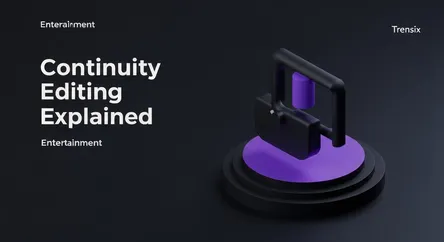Entertainment
Continuity Editing Explained

Discover continuity editing, the invisible art in filmmaking that keeps you immersed in the story. Learn how editors create seamless movie magic.
What is it?
Continuity editing, often called 'invisible editing,' is the dominant style of editing in narrative filmmaking. Its primary goal is to create a smooth and logical flow between shots, maintaining a coherent sense of time and space. This technique makes the editing process unnoticeable to the audience, allowing them to remain fully immersed in the story. Key principles include the 180-degree rule, which keeps the camera on one side of an imaginary line between characters to maintain consistent screen direction, and match-on-action cuts, where an action in one shot is seamlessly completed in the next. Eyeline matches and consistent props and costumes are also crucial for maintaining this illusion of continuous reality.
Why is it trending?
While a foundational concept, continuity editing is always relevant. It's trending now as audiences become more cinematically literate, enjoying the process of spotting continuity errors in major films and TV shows. Social media and video essay platforms are filled with creators who analyze scenes, breaking down editing choices or highlighting famous goofs, like a modern coffee cup in a fantasy epic. This active engagement turns passive viewing into an analytical hobby, keeping discussions about this fundamental filmmaking technique fresh and popular.
How does it affect people?
Continuity editing directly manipulates the viewer's perception and emotional engagement. When executed flawlessly, it creates a powerful sense of realism and narrative cohesion, allowing the audience to suspend disbelief and become lost in the world of the film. It guides the viewer's attention and clarifies the spatial relationships between characters and their environment. Conversely, a continuity error—a sudden change in a prop's position or a character's costume—can shatter this illusion, pulling the viewer out of the story and reminding them that they are watching a constructed piece of fiction.